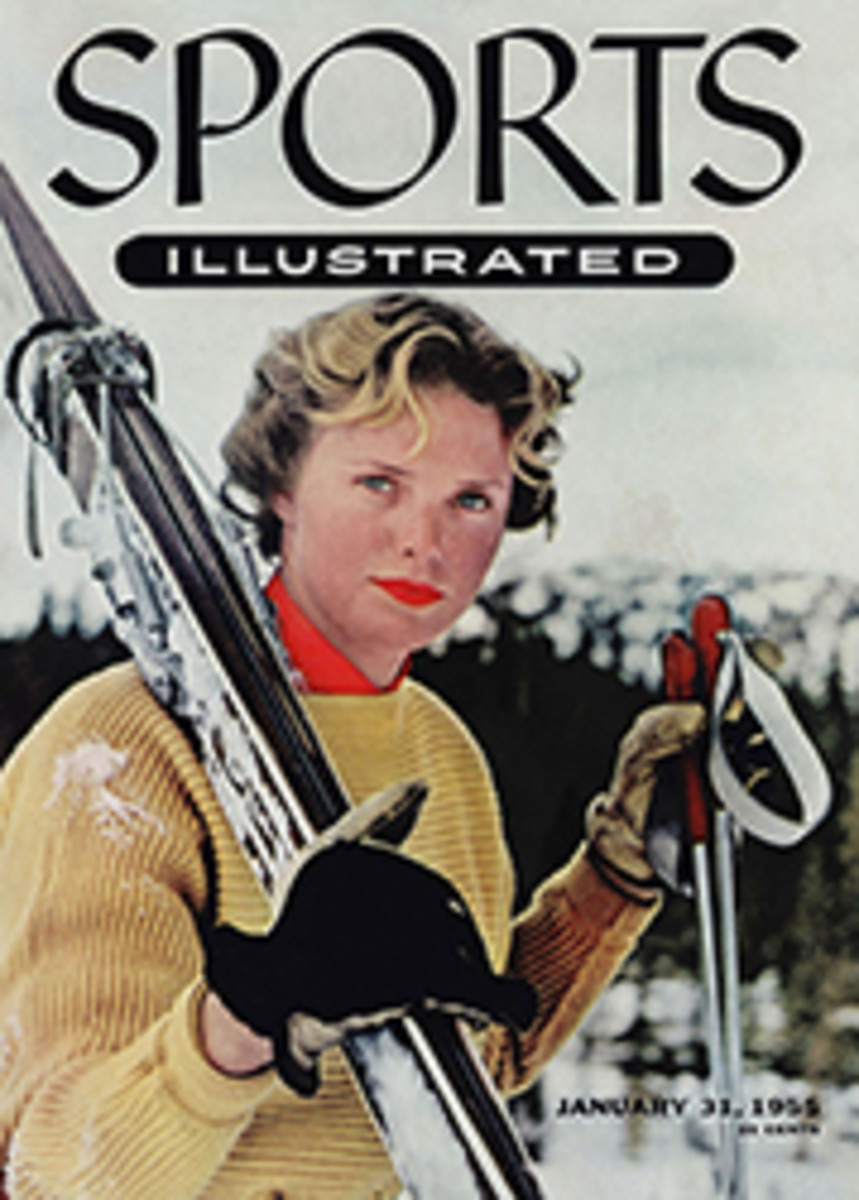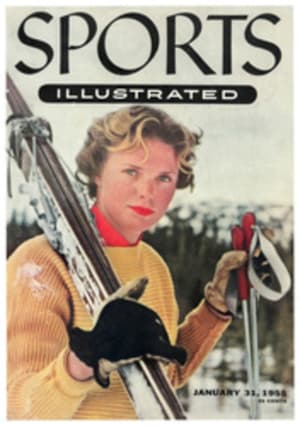
THE SURPRISING SPEEDSTER
The gleaming car above, nonchalantly going into a controlled slide, is no ordinary family coupe but the most interesting postwar automobile built by Studebaker. I will go further and say it is the most interesting product of one of the most progressive American manufacturers in terms of true design, as opposed to styling. It has the lowest center of gravity and roll center of any domestic hard-top, and although the suspension, relatively soft in sports car terms, is obeying centrifugal force through a marked lean, I was almost unaware of this condition. In fact, anything that today's new sporting Detroit roadsters can do by way of cornering, acceleration, braking and speed, the Studebaker President Speedster will do just as well. Given a 10-inch-shorter wheelbase, it would do them even better. Certainly it deserves to be classed with this new breed.
The President is a revival of a model name that brought Studebaker outstanding kudos, even during the depression years. Then a 336-cubic-inch straight eight, it took 115 stock car records in 1928 by covering 30,000 miles in 26,326 minutes on the boards at Atlantic Speedway. In 1932 a President-powered Special driven by Cliff Bergere finished third at Indianapolis; a year later Studebakers placed seventh, ninth, 10th, 11th, and 12th. With this backlog it was not surprising that two years ago this veteran firm got the jump on the industry with a beautiful, low-slung new car styled by Raymond Loewy. A rising nationwide sports car consciousness should have boosted sales to new records. It didn't, because womenfolk directly influence seven automobile sales out of 10, and wives thought the new car, among other things, insufficiently bright in the chrome department. Also, Studebaker's low, sleek, Italian-type hoodline necessitated moving the engine well back. This improved weight distribution, but it also stinted rear leg room, despite a longer wheelbase. The ladies didn't like that either.
A DAZZLING BULWARK
The new President, built on the same chassis (but with a 27-cubic-inch-larger engine than the 1953 Commander), suffers from the same drawback; but the feminine element is taking more kindly to the dazzling front bulwark of chrome. That's the authentic sales story I got from Mr. John Schroepfer, sales manager of Manor Motors Inc., the Great Neck (Long Island), N.Y. Studebaker dealer who lent me the Speedster. Mr. Schroepfer has been selling Studebakers for 25 years.
The Speedster's "Passmaster" engine is identical with that of the President but with a pertinent addition: a dual exhaust system. In conjunction with an optional 8:1 compression ratio (also available in the President) this results in 10 more horsepower. At 185 hp the Speedster's engine is unstressed, yet in power-weight ratio the car ranks with the top six automobiles in the industry, regardless of power. With basic modifications, 230 hp should be obtainable, giving a power-weight ratio of about 15 pounds per hp—far superior to that of most production sports cars and better, even, than that of the new 275-hp Packard which now appears to top the domestic list.
Getting a Speedster to test wasn't easy. Not even Studebaker's New York office had one. The car was introduced last fall as the result of dealer demand for a customized sporting version of the President. Studebaker built 850 of these cars and all were snapped up. Now another batch is scheduled for February production.
The test car showed only 28 miles on the odometer, but the factory assured me that, provided there was normal (not break-in) oil in the engine, I could open it up momentarily without harm. So I did. Despite an obvious stiffness, the Speedster quickly jumped to an indicated 90 mph (it will cruise all day at 70 mph, which is only about 2,850 rpm). It rides very comfortably to the accompaniment of a pleasantly muted exhaust burble, while even tight bends can be in high-speed sports car style with perfect safety. Heavier shock absorbers to counter that "lazy lean" when cornering are easily available (I installed them with very good results on my Studebaker), but it might be a good idea for the factory to list them as optional, thus catering directly to the enthusiast.
POWER BRAKES AND STEERING
The Speedster is equipped with the usual supermarket shopping aids—power brakes and steering and automatic transmission. The power brakes are totally unnecessary. They are even dangerous, boosting by 40% the application of already excellent brakes which are self-energizing and self-centering. The first time I trod the brake pedal, using normal foot pressure, there was a dreadful shriek of tortured tires, followed by a cloud of pungent rubber smoke. Only the steering wheel prevented me from bumping my head on the windshield. As for power steering, that is for those who like it. Last year I owned a Commander with normal steering and a special Pitman arm which raised the ratio, yet the wheel still turned easily and lightly because engine weight is not squarely on the front wheels.
The Borg-Warner automatic shift is just as good in the Studebaker as in any other car, with the usual "park," "neutral," "drive," "low" and "reverse" positions. If you tromp the throttle in "low," the car spins its wheels on dry concrete, then takes off with a head-snapping jolt that is joy to the enthusiast. In the normal "drive" position, there is still an exhilarating "dig-out" sensation as you step on the gas. With this kind of kick-down getaway, the transmission upshifts out of low at about 37 mph and out of intermediate gear at some 70 mph. To get full benefit of a downshift into intermediate, it is inadvisable to floor the gas pedal much above 50 mph. You then have plenty of reserve acceleration for emergency passing.
The Speedster's driving position is just fine, with Grand Prix car vision and an ideally raked steering wheel. The disconcerting feature of all power steering is its remote feeling of feather-lightness, rather akin to turning on ice. This calls for a kid glove touch that takes some of the fun out of driving. Also, front leg room in the Speedster is adequate only with the seat moved fully back (four inches), providing 20 inches between seat edge and pedals.
The instruments, rounded in sports car style, are set in a panel of engine-turned stainless steel and include a 160-mph speedometer and 8,000-rpm tachometer—a gratifying measure of optimism! The pillarless hard-top body is upholstered in cream leather and finished (optionally) in two-tone green and mustard or ivory and charcoal gray. However, the Speedster's $3,809 price tag obviously disregards anything but a specialized market.
in.
Rear window area
910 sq. in.
Maximum interior width
59 in.

